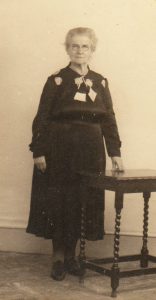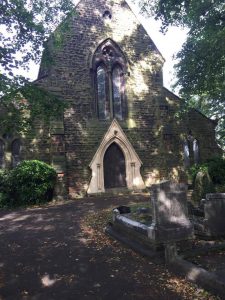Week 27 - Independence


Do you have an ancestor who was independent at a young age? Click on the image below to search for them today.
Bibliography
- 1. Ancestry.com. England, Select Births and Christenings, 1538-1975 [database on-line]. Provo, UT, USA: Ancestry.com Operations, Inc., 2014, Baptism Index Thomas Richardson, 1842 FHL Film No. 1279109 Flitton With Silsoe, Bedfordshire.
- 2. Findmypast, Burial Index Samuel Richardson, http://search.findmypast.com.au/record?id=gbpr%2fd%2fnbi00271795, 1852 St James (Anglican), Silsoe, Bedfordshire, England.
- 3. Findmypast, Baptism Index Elizabeth Martha Richardson, https://familysearch.org/search/record/results?count=20&query=%2Bgivenname%3A%22Elizabeth%20Martha%22~%20%2Bsurname%3ARichardson~%20%2Bbirth_place%3ABedfordshire~%20%2Bbirth_year%3A1852-1854~%20%2Bdeath_place%3AWisconsin~.
- 4. Ancestry.com. 1851 Census of Canada East, Canada West, New Brunswick, and Nova Scotia [database on-line]. Provo, UT, USA: Ancestry.com Operations Inc, 2006, Year: 1851; Census Place: Morris and Hullett, Huron County, Canada West (Ontario); Schedule: A; Roll: C_11728; Page: 9; Line: 39, RANDS Robert, Elizabeth, Richard, James, John, William, Ann.
- 5. Ancestry.com. New York, Passenger Lists, 1820-1957 [database on-line]. Provo, UT, USA: Ancestry.com Operations, Inc., 2010., Passenger List 1857 Arrival: New York. Microfilm Serial: M237, 1820-1897; Microfilm Roll 178; Line: 45; List Number: 1054, RICHARDSON Ann, Charles, Susannah, Betsey, Elizabeth.
- 6. Findmypast, 1861 England Census, Class: RG 9; Piece: 2001; Folio: 118; P.12; GSU roll: 542901; Willenhall, Wolverhampton, Thomas Richardson.
- 7. Google Maps, Distance from Silsoe, Bedfordshire to Willenhall, Staffordshire, https://www.google.com/maps/dir/Silsoe,+Bedford,+UK/Willenhall,+UK/@52.2960887,-1.716111,9z/data=!3m1!4b1!4m14!4m13!1m5!1m1!1s0x48764addf71ad9ef:0x239562fa62cf88b7!2m2!1d-0.4250984!2d52.0098065!1m5!1m1!1s0x487098cc4dbf49d1:0xefaf2b8351503df0!2m2!1d-2.057635!2d52.585017!3e0.
- 8. Marriage Certificate of Thomas Richardson and Susanna Appleby, No.302/1861, Parish of St Stephen, Willenhall, Original in author's possession.
- 9. Findmypast, 1911 England Census, Class: RG14; Piece: 17092; Schedule Number: 39; Short Heath, Staffordshire, RICHARDSON Thomas, Susan, Ruth, Miles Ida May and George Kenneth.
- 10. FreeReg.org, Burial - Thomas Richardson, No.2963/1914.
Image Credits
- a. Fanny Richardson, Original in author's possession.
- b. Holy Trinity Church, Willenhall, Staffordshire, Image courtesy of Lindsay Lloyd.

As the name implies the Richardson’s did labouring work from time immemorial, which is why the name is such a common one. There being so many Richardson’s, we were only able to track the family back with absolute certainty to 1733 when Samuel was baptised in Blunham with Mogerhanger. He is later described as a servant, but this is, we think, the legal use of the word. Although Blunham and Mogerhanger are some way from Silsoe, the Earls De Gray owned the land .By the time of Thomas Richardsons birth the family had moved to a cottage in Silsoe. Samuel worked at the George Hotel
as an Ostler and post boy (no nothing to do with mail) and also at one point describing himself as a groom. When he married Ann Rands at Fliton with Silsoe church they went to live with a family called Bottom in the nearby village of Clophill. It is interesting to see the Marriage register. Samuel signed his own name where as for pages before and after their marriage record, everyone taking part , except the vicar, was illiterate and all participants signed with a cross.
Shortly before Samuels death, Lord De Gray had designed and caused a new church to be built at Silsoe and Samuel is buried somewhere in the church yard ( Poor people did not have markers and the church generally does not keep a plan of church yards showing who is buried where). What is now Fliton church is very much as it would have been when Samuel married Ann. it avoided the usual Victorian ‘make over’ as there was now a spanking new church at the gates of Wrest Park. However Fliton church still has the De Gray mausoleum.
Lord De Gray was an exceptionally rich and a gifted, but not professional architect, demolishing Wrest Park and building Englands only French style chateaux. The family died out when the last of the line took his plane for a spin one night in France during the first world war and seems to have forgotten the hill nearby.
The eldest Richardson son was called Samuel and his eldest son Thomas and so on for generations, until Thomas went to Willenhall and he called his eldest THOMAS, a man who refused to follow in his fathers footsteps and eventually went to California via Worcester(UK) and disappears from history.
Thomas also appears to have had a bit of a disappointment with his other son Joseph as he too refused the lock making, preferring horses, setting up his own haulage business. He lived in that same street you visited in a house further down the street, an end terrace so there was room to keep the horse. He did well and expanded, taking on the rental of Sandbeds farm with its barn, stables (for horses) cow shed (for his car) and fields (for hay and grazing).
Thomas and Susan’s grave is in the church yard opposite the church. It was quite expensive at the time and the headstone is still clear to read today.
Thomas – thank you so much for this indepth information about the Richardsons! I saw the graves in 2018 when I was visiting the UK. It is so great to hear the reasons why Thomas was left behind and what he did in the years after. One of the Richardson descendants who are descended from his brother were so excited to hear as well.
Again thank you so very much for this.
Regards
Megan
I am great grand son of Thomas Richardson .Of course i never knew him. However:
On death by drowning in the village of Pulloxhill of his father sSmuel he and his family were eventually committed to the workhouse at Ampthil as being destitute. Thomas the eldest was sent by the guardians to work as an indentured boy in a small lock works in Willenhall. His younger brother was put to work locally as a valet (at 8yrs old). The guardians duty was to defray costs at any price. The guardians paid for the trip to USA. This was one way and if the family returned they had to repay the cost of the original trip, which of course would be quite beyond the family. Workhouses were the supply of indentured labour at that time and many many boys went this way.
As I say I never knew Thomas but my father and a couple of aunties say that he did resent being left in England, but no one had any choice in this matter.
Upon Thomas death the congregation of Holy Trinity collected for a memorial to him, a stone plinth surmounted by a gas lamp in the church yard, which was later converted to electric.
Tom’s youngest son was my grandfather Joeseph (never knew him either.) More luck with his son, Thomas, who was my father. I have a son Timothy. These are brief notes on the subject my wife and I have looked into and If you want to know more contact me by email
Hello Peter
Thank you so much for commenting. I always wondered why a mother would leave their young teenage son behind and wondered if it were something like this! When I visited the Holy Trinity in 2018 with a cousin who lives in the same street I saw his memorial. My paternal grandfather died in a house across the road from where Susan and Thomas Richardson had lived in that same street. I would love to hear more stories if you have them. Regards Megan
I have included your blog in INTERESTING BLOGS in FRIDAY FOSSICKING at
https://thatmomentintime-crissouli.blogspot.com/2018/07/friday-fossicking-27th-july-2018.html
Thank you, Chris
Hi Chris
Thank you for your ongoing support.
Regards
Megan
I would guess Thomas’ sermons at Holy Trinity reflected his experiences and showed his strength. Thank you for sharing this fascinating story!
Hi Linda
I would think they might have. I am hoping that one of the older cousins in the UK can shed some more light on him from stories they were told. Will update once I know more later this year after our trip.
Regards
Megan
That is quite young! I can imagine a boy that age being employed in a nearby town, or even a few hours away. But deciding that he stays in the home country while the rest of the family goes to the US is quite a surprising decision! He must have been quite content with his current position and home, and was resistant to go. Or maybe the family didn’t have the money to take him, and he was going to eventually pay his own way, but then changed his mind. It would be very interesting to know the real reason!
Hi Eva
I know! I do know that children were often out working quite young in the era but looking at my 14 year old there is no way he would make it on his own! I really would love to know the story behind him staying. I am hoping that maybe some of my dad’s cousins may know from family legend so will be asking when I go to the UK.
Regards
Megan
Hi. So sorry for the loss of your dad. About your article, you asked what made Thomas stay behind. My question is how could his mother have left him? He would have only been 15 years old. Nonetheless, he did well for himself. Found his calling in the church and had 16 kids. Good for him. Family trees are interesting. Great job on this article.
Hi Shalisha
I know! I could NEVER leave my son behind. He may be bigger at 14 than many men, but he is still just a boy, my boy. I love unearthing these family stories, however, sometimes the questions that will never have answers bug me!
Regards
Megan